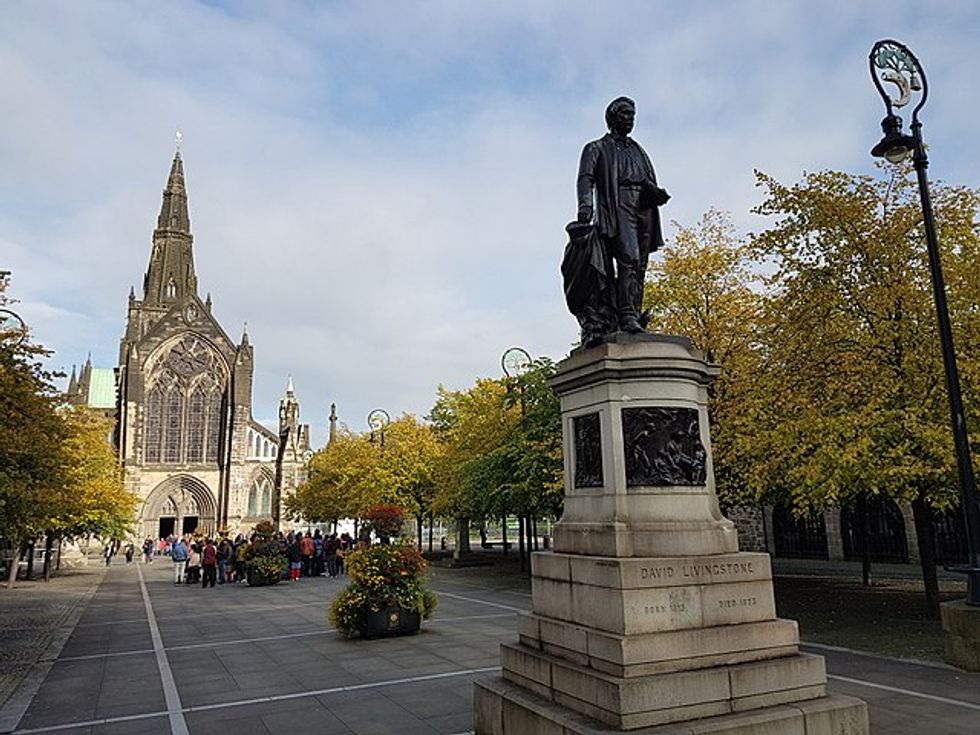The monument was identified during a report commissioned by Glasgow Council
Don't Miss
Most Read
Trending on GB News
A statue of an anti-slavery missionary and explorer could be taken down in Glasgow after it was alleged he worked in a mill using West Indian cotton.
The monument of David Livingstone currently stands in Cathedral Square in the east of the Scottish city.
But it could soon be removed after Glasgow Council identified as one of a series of sites with links to slavery.
Dr Livingstone’s statue was highlighted within a 119-page report, because of his “defence” of cotton masters after he “likely” worked in a mill from the age of 10.
He was seen as a hero to many after describing slavery as the "greatest meanness ever perpetrated".
Dr Livingstone was a Christian missionary known and revered all over the world for his work exploring Africa in the 19th century.
He was one of Britain's most iconic figures during the late Victorian era, and is buried at Westminster Abbey.
The Glasgow Slavery Audit were commissioned by the council to lead the investigation, with the research being focused on people involved in Atlantic slavery between 1603 and 1838.
The statue of David Livingstone in Glasgow
WikiCommons
Mr Livingstone's monument
WikiCommons
Others to be mentioned in the report included Colin Campbell, John Moore, William Gladstone, James Oswald and Robert Peel Junior.
Buildings on the list included Pollok House, Aikenhead House, Haggs Castle, Linn House and Glasgow Academy, while street names Glassford Street and Buchanan Street were both featured.
Speaking after the report was released, Dr Stuart Waiton from Abertay University, said it was “difficult to work out” what the benefit of removing such monuments was.
Mr Waiton added: “I suppose it allows some Glasgow officials to virtue signal and allows some woke warriors to feel awash with self-righteousness but what it does to resolve or even identify racism is far from clear.”
Historian Sir Tom Devine said he “would love to see the report’s findings become one of the bases of a Glasgow Museum of Slavery and Empire".
He said: “The report is a very competent and thorough piece of work as one would expect from a trained historian.
“Glasgow’s approach in hiring a scholar to do the work on the city’s slavery past is therefore to be commended.”










